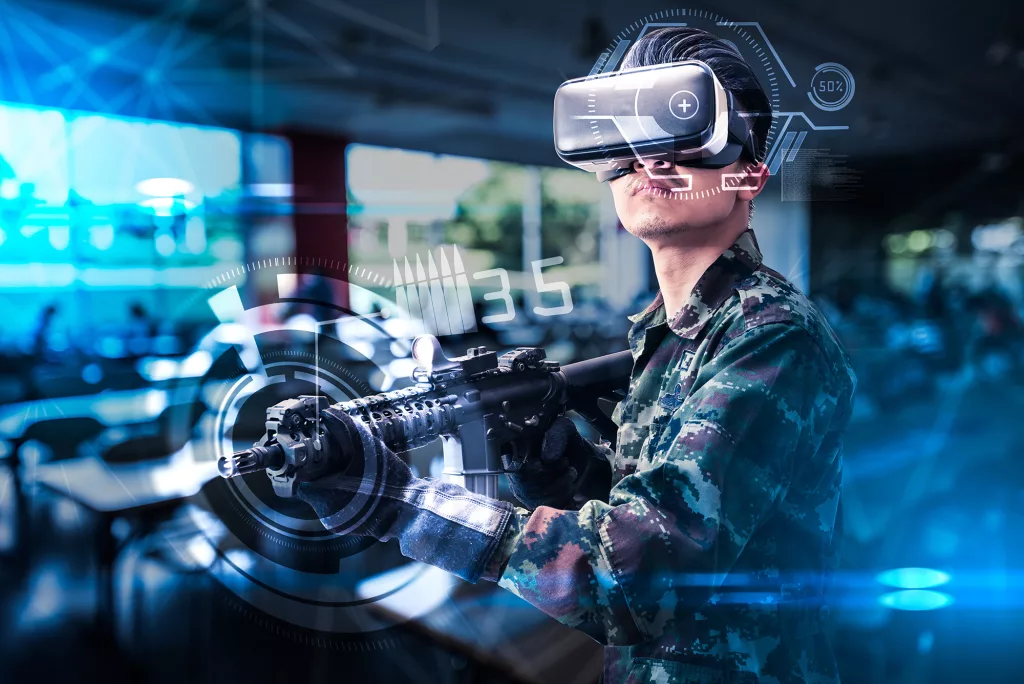Behold the New War: Same as the Old War, but it Comes with an App
On the battlefields of Ukraine, massive military kit is trumping technology, reports Wim Romeijn.
On the undulating plains of eastern Ukraine, tech wizardry powers and shapes a lethal cat-and-mouse game.
Here, loss of human life and the destruction of military hardware is accompanied by an unravelling of traditional doctrine. While drones buzz overhead, and troops on the ground receive battlefield information in real-time via smartphones, the battle arenas still look more like Great War than Star Wars. Infantry troops huddle in muddy trenches, facing a desolate no-man’s-land that evokes memories of a Flanders Field, pocked with shell craters and strewn with uprooted trees.

This is not what military planners and strategists had envisioned as they pondered the future of modern warfare, and technology’s place in it. Heavy battle tanks and self-propelled howitzers, until recently considered relics of a bygone era, are back in vogue. Artillery, while never discarded, has also earned renewed prominence.
Incantation Revised
The modern battlefield, awash with sensors that spot, record, and respond to enemy moves in near-real-time, imposes a need for constant, rapid movement to evade guided missiles and shells. The revised advice from strategists is now “Disperse, hide, and keep moving”.
Technology has brought firepower and intelligence-gathering down to platoon level; the role of headquarters has shrunk. With Starlink access, a smartphone and munitions, soldiers can detect and strike targets using data previously available only to top brass.
Dispersal brings with it certain logistical challenges: food, ammo, and medical care need to reach small units spread over a large area. Recruitment and training must be updated to match a much looser military hierarchy that demands initiative, decisiveness, and tech skills from soldiers in the field.
Though technology from space-based surveillance and broadband to drones and AI-powered battlefield management apps has undoubtedly changed the way war is waged, it has so far failed to materially affect outcomes. Armies adapt to new threats and adopt countermeasures on-the-fly.
Tech Over Mass?
A Ukrainian Spetsnaz battalion, supported by National Guard troops, chased invading paratroopers from Hostomel Airport at the start of the Russian invasion, and went on to wipe out 80 tanks in an armoured column heading to Kyiv. Strategists almost universally hailed this as a victory of tech over mass, vindicating their verdict on the obsolescence of tanks.
An App for That
But — after a humiliating defeat in the Battle of Brovary — Russian generals are starting to see the light. The Ukrainians’ remarkable fightback may have been grounded in courage and Western anti-tank missiles, but it owed much to a beta version of a homegrown battlefield management app.
Called Delta, the app has become standard issue, and is even being deployed in NATO forces. It bundles and analyses data from troops and civilian officials as well as military streams from sensors, drones, and satellites. The app merges these data in real-time to map the battlefield — including the position of enemy assets.
Leveraging the analytical power of AI, Delta not only improves troops’ situational awareness, it also suggests a collective course of action — complete with specific combat missions. During the initial assault on Kyiv, Delta provided up to 1,500 enemy targets per day to the city defenders.
The app facilitates combined arms tactics, the operational philosophy of NATO ground forces that was initiated in the 1910s as a more dynamic alternative to trench warfare. The tactic integrates all combat arms to fight as a single, mutually supportive, and reinforcing unit.
Though airpower is a crucial part of any combined arms operation, it was largely absent on the Ukrainian side. Deploying combined arms tactics without that crucial factor led to high losses, and commanders soon ditched it. They reverted to Soviet-era methods: massive artillery barrages, and a war of attrition.
Former spokesperson for the US Army’s Combined Arms Centre in Fort Leavenworth, Colonel (ret) Steve Boylan, is not surprised. “It has taken us many years of training and tinkering to master the tactic effectively,” he said, “without having to apply these lessons in a war while doing so.”
Up in the Air
So far in this war, airpower appears overrated; defences in place deny both sides air superiority. Ukraine’s ageing Mig and Sukhoi fighter jets, of late-1970s vintage, are mostly being used as missile platforms. They stay aloft only briefly, fire their ordnance at distant, over-the-horizon targets, and make a quick getaway. It remains unclear how the F16s, controlled by minimally trained pilots, can escape Russia’s beefed-up air defences and directly support infantry and armour on the ground.
New high-tech equipment has changed the patterns of advance and retreat relative to historical experience. Today’s lethal weapons appear to favour defenders: offensive operations often become prohibitively costly in terms of lives and material. A three-to-one advantage in troops and firepower — traditionally required for a successful offensive — no longer suffices. Some military planners suggest a nine-to-one ratio.
However, realities on the ground can reduce estimates to guesswork. The war has produced a baffling mix of offensive and defensive outcomes that lack a common denominator. The continuing importance of legacy systems such as tanks, mortars, and landmines hardly heralds an epic shift in warfare.
Value of Attrition
Historically, innovation does not usually determine outcomes. During World War I, the late appearance of aeroplanes and tanks may have helped to a degree — but did not clinch an Allied victory. Attrition and an unstable home front did that.
World War II saw the emergence of radio, radar, and high mobility. These advances failed to avoid bloodshed such as that seen at the Battle of Kursk, which cost the lives of hundreds of thousands of Russian and German soldiers, and involved 6,000 tanks — many of which were lost.
On a lesser scale, Operation Goodwood, a 1944 British offensive in Normandy — described as “the Death March of Armour” — resulted in a painful Allied setback when up to 400 tanks were knocked out by German defenders in just three days. In the Italian theatre, Allied forces sustained over 40,000 casualties in repeated attempts to pierce the Gothic Line.
While new and more lethal technology does matter, opposing forces can adapt to it and dampen its effect with a combination of grit, dispersion, concealment, and countermeasures.
The change that military technology delivers is evolutionary, rather than revolutionary. The mothballing of tanks and other armoured hardware, a 40-year trend within NATO, was premature, and possibly based on wishful thinking and budgetary constraints.
The essence of war has not changed, and nor has its objective: To occupy and hold disputed territory by whatever means available.
You may have an interest in also reading…
World Bank on Sustainable Recovery: The Need for Long-Term Financing
The COVID-19 pandemic is affecting every country’s health system and economy to a degree not seen for a century or
The Tale of the Squawking Dove: US Federal Reserve Moves with Cautious Resolve
Markets may have disliked what Jay Powell had to say before; however, what he does now proves a bullseye hit
World Bank on COVID-19: The Road Back Must Be Green, Resilient, and Inclusive
By Axel van Trotsenburg World Bank Managing Director of Operations COVID-19 has imposed a deeper, more widespread shock than the



















































































